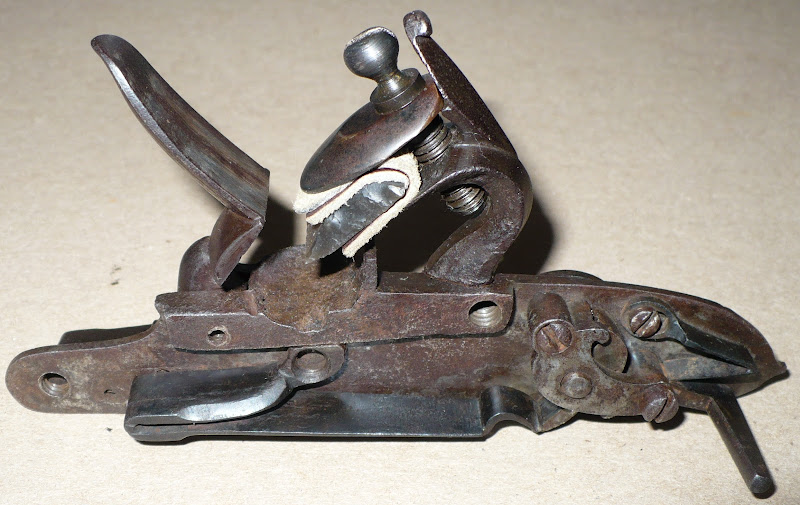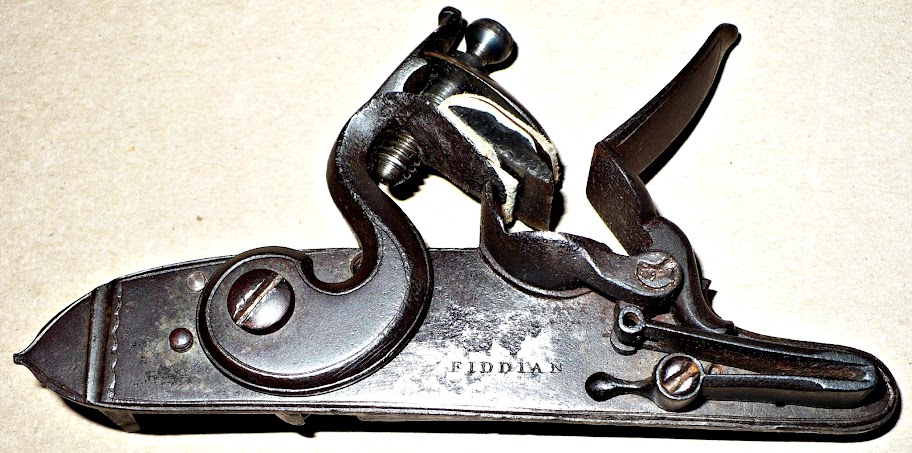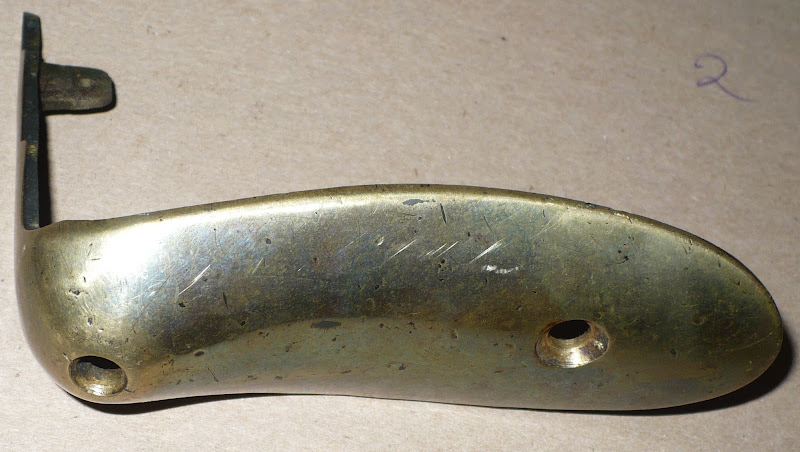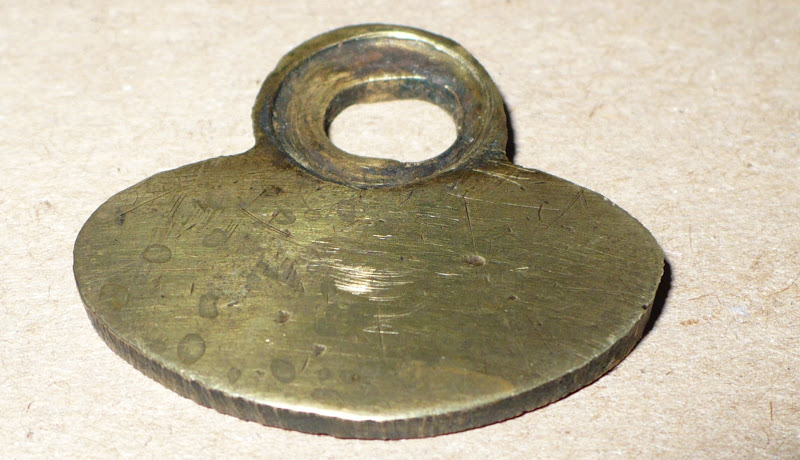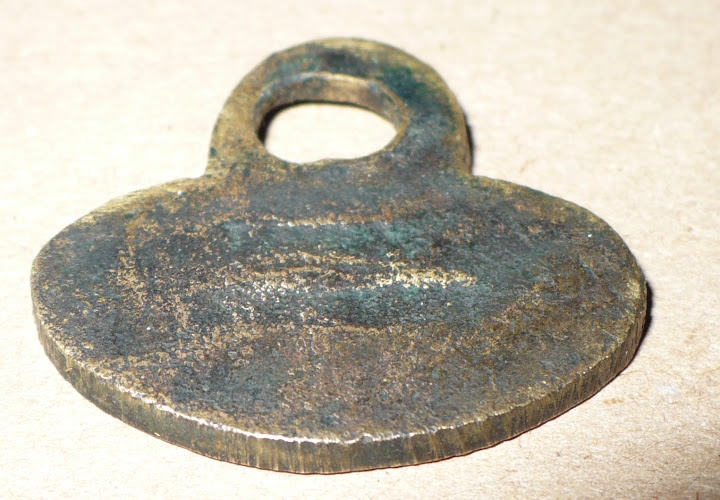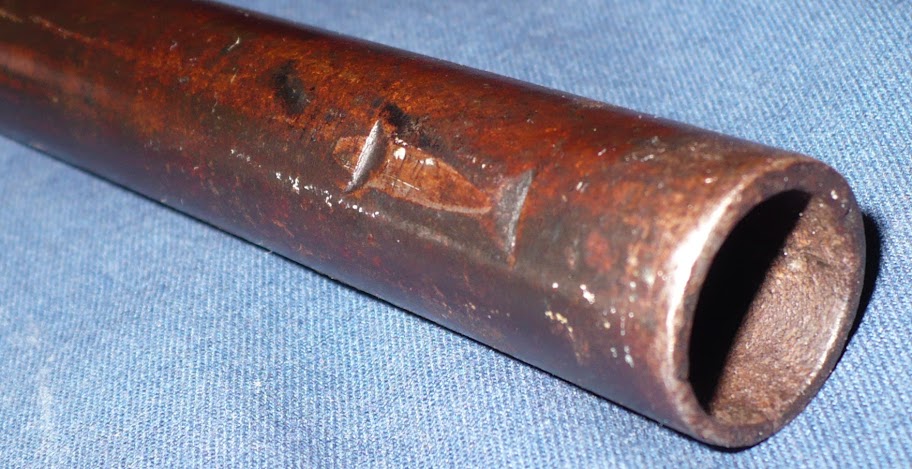Folks, I have been carefully disassembling my 1790-1820 era fowler, and managed to download pictures of the only stampings or identification markings I could find.
This is located on the bottom flat of the breech end of the barrel. Please help me identify what these markings might be - I am quite interested in learning the "story" behind this interesting gun!
I do not have time to upload more images, but I plan on documenting every square inch of every component, pin, and scar for posterity.
Basic barrel dimensions - almost 38" from breechplug to muzzle; 5/8" bore ID, barrel is octagonal to round about 15" from breechplug.
I appreciate any ideas!
Adam
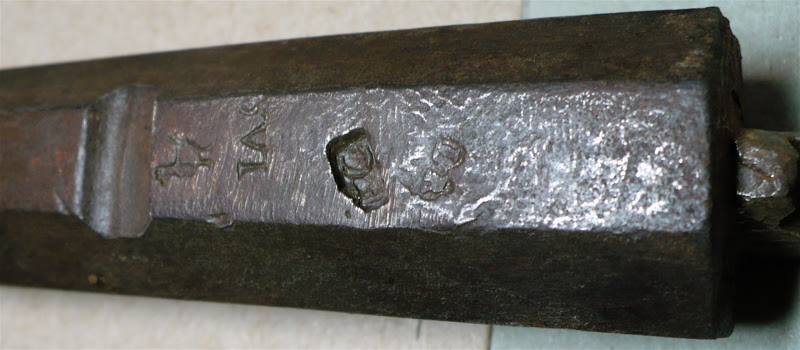
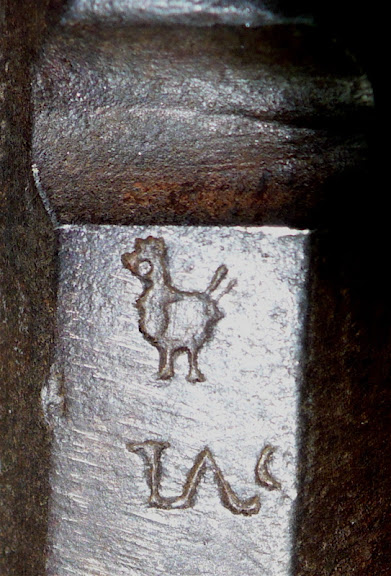

This is located on the bottom flat of the breech end of the barrel. Please help me identify what these markings might be - I am quite interested in learning the "story" behind this interesting gun!
I do not have time to upload more images, but I plan on documenting every square inch of every component, pin, and scar for posterity.
Basic barrel dimensions - almost 38" from breechplug to muzzle; 5/8" bore ID, barrel is octagonal to round about 15" from breechplug.
I appreciate any ideas!
Adam








